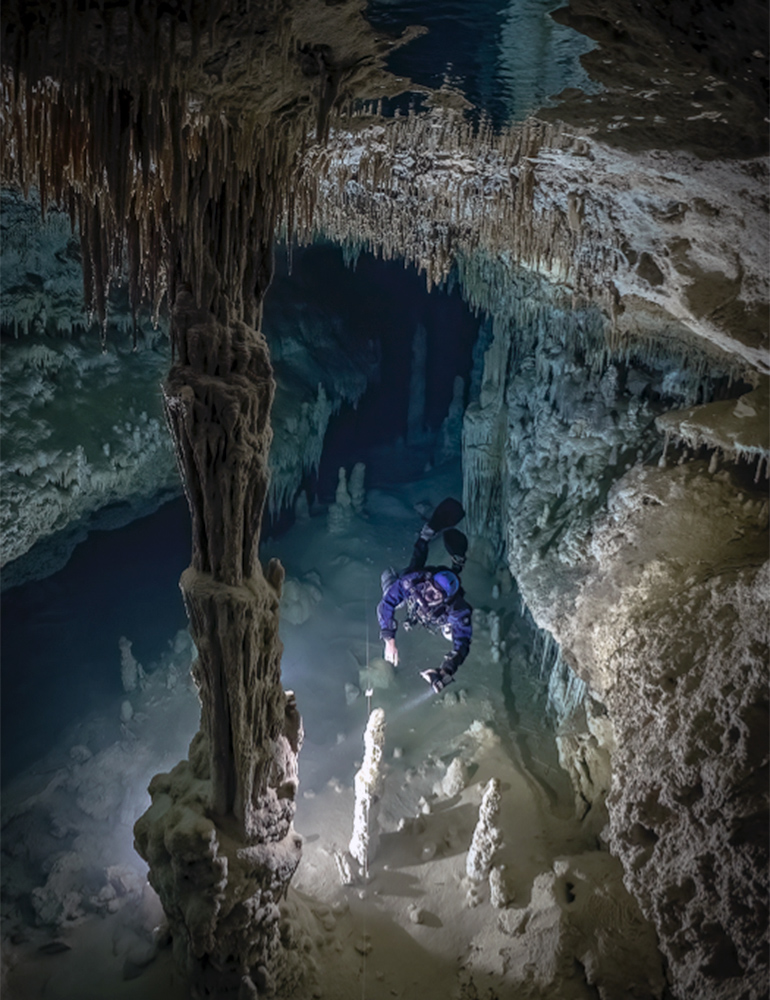2023-11-10 ノースウェスタン大学

The eastern Yucatán Peninsula study region is pierced by vast interconnected flooded tunnels, functioning as underground rivers. Photo by Natalie Gibb
◆研究からは、微生物コミュニティが多様性に富み、特定のパターンに組織されていることが明らかになりました。また、Comamonadaceaeという一群のバクテリアが地下コミュニティの重要な要素であることが示唆されています。この地下川は何百万人もの人々に飲料水を供給しているため、微生物コミュニティの状況が人間に影響を与える可能性があると指摘されています。
<関連情報>
- https://news.northwestern.edu/stories/2023/11/yucatans-underwater-caves-host-diverse-microbial-communities/
- https://journals.asm.org/doi/10.1128/aem.01682-23
ユカタン東部炭酸塩帯水層の微生物生物地理学 Microbial biogeography of the eastern Yucatán carbonate aquifer
Magdalena R. Osburn , Matthew J. Selensky , Patricia A. Beddows , Andrew Jacobson , Karyn DeFranco, Gonzalo Merediz-Alonso
Applied and Environmental Microbiology Published:2 November 2023
DOI:https://doi.org/10.1128/aem.01682-23

ABSTRACT
Constraining the spatial distribution of microorganisms and their ecological interactions is crucial for informing biogeochemistry. To that end, we explore horizontal and vertical patterns of microbial biogeography in the eastern Yucatán carbonate aquifer by examining the relative abundance of microbial taxa via 16S rRNA gene sequencing. As one of the largest anchialine groundwater systems on Earth, the density-stratified Yucatán aquifer consists of a meteoric lens overlying saline groundwater. The myriad sinkholes (cenotes) of the eastern peninsula lead into a vast network of subsurface conduits. Several studies describe microbial communities within specific regions of the aquifer, yet fundamental questions remain regarding the ecology and distribution of biogeochemically relevant microbes. Our analysis demonstrates that this aquifer hosts a distinct microbiome from nearby seawater, with regionalism observed across cave systems and vertical water column zones. We apply novel software to construct taxonomic co-occurrence networks at different scales and categorize highly connected groups of taxa into potential niches. Our network analysis approach suggests that ubiquitous, metabolically flexible taxa such as the family Comamonadaceae act as ecological linchpins across several niches, often directly or indirectly co-occurring with taxa capable of anammox (e.g., Gemmataceae), methanotrophy (e.g., Methyloparacoccus), or organoheterotrophy. Furthermore, communities from a deep, pit-like cenote open to the surface show the strongest niche partitioning between water column zones, differing from those encountered throughout the mostly dark and oligotrophic aquifer system, including another deep pit cenote with no direct surface opening. Our results suggest that members of a core microbiome could modulate different biogeochemical regimes depending on location, acting as reservoirs of metabolic potential in disparate environments of this groundwater system.



